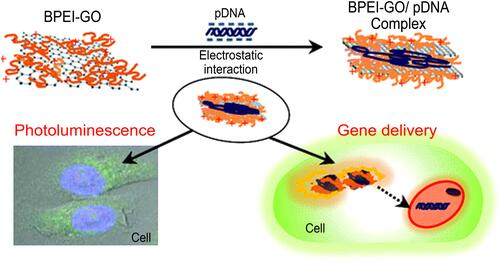Figures & data
Figure 1 Graphite and different allotropic forms of carbon.

Figure 2 Structure of graphene and its oxidized derivatives.

Figure 3 The controlled functionalization of nanographene sheets through nitrene [2+1] cycloaddition reaction at ambient conditions.
![Figure 3 The controlled functionalization of nanographene sheets through nitrene [2+1] cycloaddition reaction at ambient conditions.](/cms/asset/29d18654-3f34-4acc-9df7-8dc9aaa8dd57/dijn_a_12192122_f0003_c.jpg)
Figure 4 GO with PEI coverage coloaded with cisplatin and topotecan for mitochondria targeting of cancer cells.
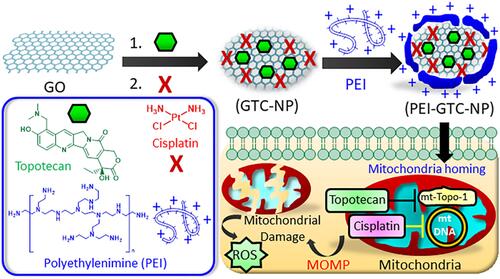
Figure 5 Schematic representation of the synthesis and cellular uptake of GO nanoparticle/chitosan hybrids as drug delivery system.
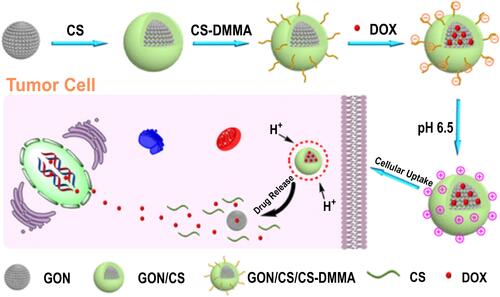
Figure 6 (A) The chemical structure of the polyglycerol-covered nanographene with the mitochondria-targeting ligands and charge conversional functional groups. (B) Multifunctional drug delivery system accumulates in mitochondria by targeting ligands and photothermal properties under NIR laser irradiation result in drug release and good therapeutic efficiency.
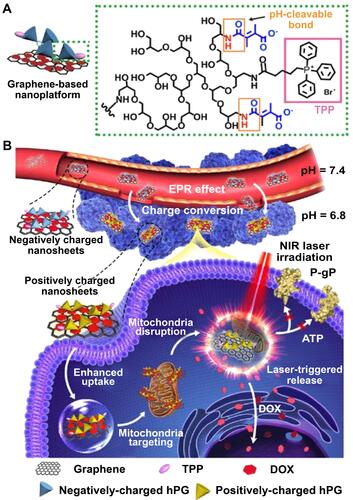
Figure 7 Functionalized rGO with thiol-maleimide containing catechol (dopa-MAL) as a targeted drug delivery system for DOX to destroy human breast adenocarcinoma cancer cells (MDA-MB-231).
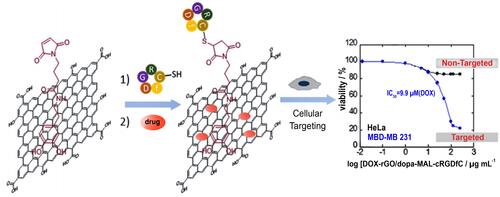
Figure 8 Synthesis of folic acid-functionalized PEGylated GO (GO-PEG-Fol), with small size and narrow size distribution (∼30 ± 5 nm), and the ability of efficient converting NIR light into heat.
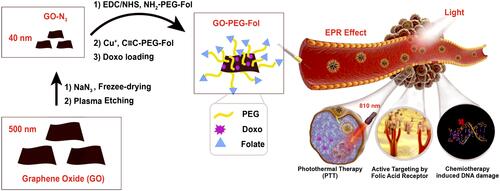
Figure 9 (A) Schematic representation of the synthesis of the polyglycerol amine functionalized graphene sheets (GA), polyglycerol sulfate-functionalized graphene sheets (GS) and conjugation of pH-sensitive dye to the GA and GS (GAD, GSD). Information regarding the synthesis these graphene platforms can be found in ref.Citation166 In vitro release profile of DOX from the GAD (B) and GSD (C) at 37 °C in various media.
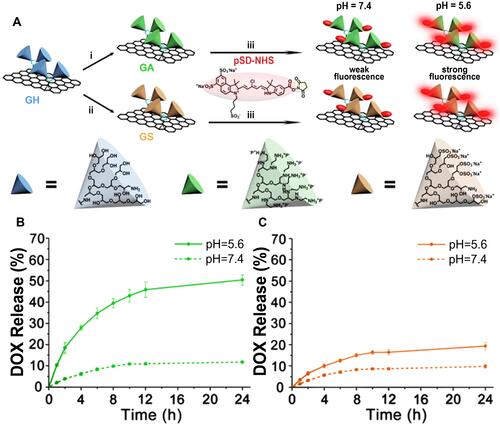
Figure 10 Schematic presentation of the functionalization of QDs by poly(l-lactide)-PEG and their application for cell imaging.
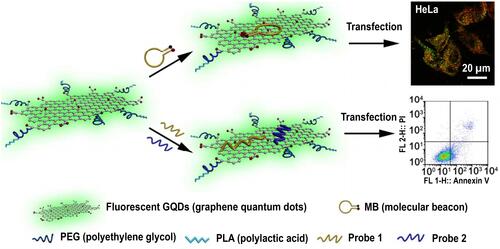
Figure 11 Schematic representation of the synthesis of DOX-BSA-rGO as a light sensitive drug delivery system for chemo-photothermal therapy.
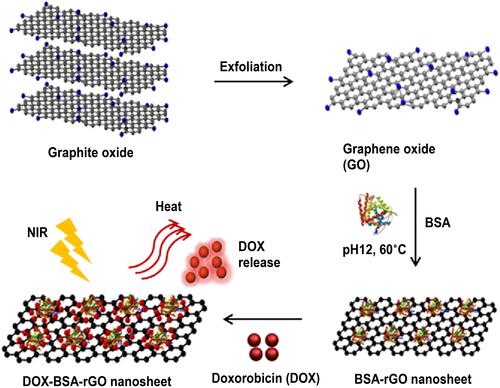
Figure 12 Schematic presentation of fabrication of GO-based gene delivery system through covalent attachment of LMW BPEI to this platform.
